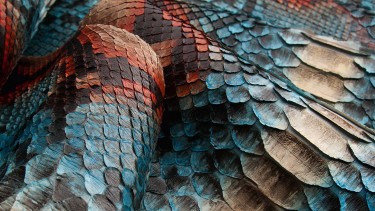
Brazilian Textiles
The world's next 'it' luxury hub, Brazil is also fast becoming a force in leather production and sustainable fabrics.
With sustainability efforts on the rise, more and more options are becoming available for designers looking to start an eco-friendly label, or for those shifting to their first sustainable collection. From plants to fish, below are a few of the many natural alternatives now available to replace harmful synthetic fabrics.
As sustainability continues to be the focal topic of discussion in all things textiles, more and more options are becoming available to designers looking to start an eco-friendly label, or for those shifting to their first sustainable collection. From plants to fish, below are a few of the many natural alternatives now available to replace harmful synthetic fabrics like polyester and nylon.
Hemp – Hemp is one of the oldest domesticated crops known to man. It has been used for paper, textiles, and cordage for thousands of years, dating back to as early as 8,ooo BC. Hemp is categorized as a bast – a strong woody fiber obtained chiefly from the phloem of a plant, which grows on the outside of the plant’s stalk.
Unlike many fibers used in today’s apparel industry, hemp is grown without the use of harmful chemicals, pesticides, herbicides or fertilizers. It is also a high-yield crop that grows very rapidly and with little irrigation (50% less than cotton), making it a very appealing and “clean” option for designers. Other benefits of hemp: tensile strength and durability (8x that of cotton), hypoallergenic, breathable, and UV resistant.
It is no wonder that Stella McCartney, Calvin Klein and a host of other labels now use the fiber in their apparel, with many others quickly catching on. Hemp can be used to make many products, including jeans, shirts, dresses, hats and bags.
Fish Leather – Fish leather is a great alternative to traditional hides. It is made from the skin of different fish species, such as salmon, perch and carp. These fish species are regularly consumed, and the skins would often be wasted otherwise. Fish skins are considered exotic and serve as a great substitute to the typical exotic leathers like as crocodile and snake that threaten endangered species.
The tanning process of fish skins uses far less chemicals than that of other animal skins, eliminating things like lye and acid that cause atmospheric pollution. They are very durable and their texture depends on the size and shape of the scale pockets, which can vary from 2mm to 2cm in size according to the species.
Fish leather is ideal for accessories, commonly used to make purses, wallets, jewelry and shoes. Major brands like Prada, Dior and Nike have all found ways to incorporate this material into their collections.
Tencel – Tencel® is a natural fiber known for its flattering drape and soft, luxurious hand-feel. It is the brand name for a fabric from a fiber generically called lyocell, which is owned by Lenzing Fibers of Austria.
Lyocell is made from the wood pulp of the eucalyptus tree. The fiber is produced with minimal impact on the environment – using a non-toxic solvent that is continually recycled during the production process – and economical use of energy and water. Further, eucalyptus requires fewer pesticides and far less acreage to grow than cotton, thus it is much more eco-friendly.
The fabric made from Lyocell is breathable and naturally wrinkle-resistant, making it a favorable material among major fashion brands like Patagonia, Banana Republic and L.L. Bean.
Flax – Flax is one of the most promising developments in sustainable textiles today. While most flax is grown and harvested for its grain and turned into food, its fiber can also be transformed into materials that look and feel similar to cotton.
Flax fibers come from the flax plant and are usually used to make linen, which is known to be one of the world’s strongest and most durable natural fibers. The bast fiber is one of the oldest agricultural crops in the world and is naturally pest-resistant. It also requires very little fertilization and chemicals to thrive, and little to no irrigation. The fact that every part of a flax plant is used makes it all the more eco-friendly.
Because of its tensile strength and breathability, along with its cool touch, linen is great for everything from apparel to bedding and various other interior textiles.
Link: www.lesouk.co
This article appears courtesy of Le Souk NYC, written by Vanessa Zdesar